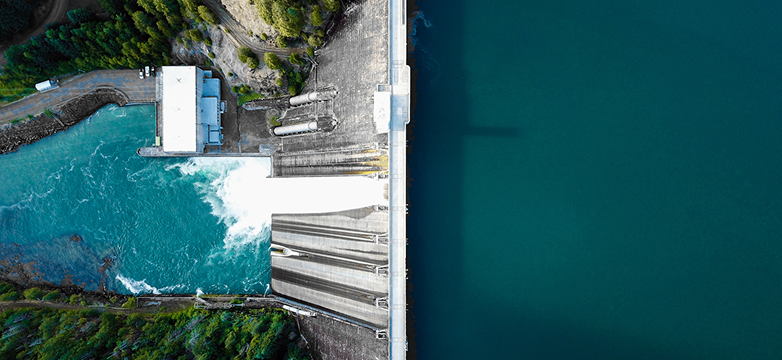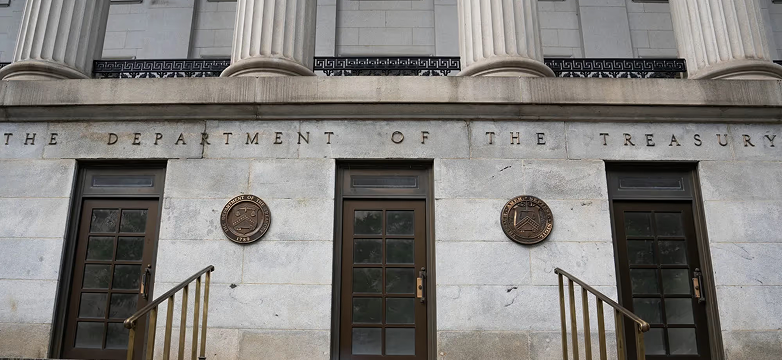DOE announces final 48C allocations

Updated January 16, 2025
Authored by Wendolyn Holland
On Friday, January 10, the US Department of Energy (DOE) and Internal Revenue Service (IRS) announced that they completed the second and final review of applications for the §48C qualifying advanced energy project investment tax credit (ITC). They awarded $6 billion to 140 projects across 30 states. This allocation follows awards for the first round of applications in 2024, which totaled $4 billion for more than 100 projects.
Background on 48C tax credits
The Inflation Reduction Act expanded the scope of Internal Revenue Code Section 48C, a cornerstone program supporting advanced manufacturing in the US. Critically, the legislation increased the allocation of ITCs to $10 billion.
The 48C credit was first introduced under the American Reinvestment and Recovery Act of 2009 to support investments in projects engaged in manufacturing advanced energy products. The credit has three objectives:
- Expand domestic clean energy manufacturing and recycling capacity.
- Expand domestic critical minerals processing and refining capacity.
- Improve efficiency and reduce greenhouse gas (GHG) emissions from US industrial facilities.
At the time, these projects included a range of renewables and energy-efficiency “widgets” such as the components of solar panels, wind turbines, batteries, and transmission equipment. Allocated projects are eligible to receive tax credits of up to 30% of their investment in qualifying infrastructure for projects that meet prevailing wage and apprenticeship requirements (PWA). Some projects eligible for 48C would also qualify to receive production tax credits under Section 45X, but dually-eligible projects must elect either 48C or 45X.
For the expanded 48C, the DOE awarded ITCs in two rounds — one in 2024 and one in early 2025. For the first round, the DOE received concept papers for nearly $42 billion in initial applications. After winnowing down the applications to only the most qualified projects, DOE announced that it received 250 full applications seeking $13.5 billion in aggregate tax credit awards.
On Friday, March 29, 2024, DOE announced details of the first $4 billion tranche of 48C awards. Category 1, which includes energy products and recycling of eligible components, made up 67% of the projects receiving allocations. The remaining share of allocations are associated with newly eligible categories, including industrial emissions reduction (Category 2) and critical materials processing (Category 3). The second round of awards followed a similar breakdown: 63% of allocations went to Category 1 projects, 12% to Category 2, and the remaining 25% to Category 3.

News of the first 48C allocations began to reach applicants in late March, ahead of the March 31 deadline set forth in IRS Notice 2023-44. Approximately 40%, or $1.6 billion of this allocation, was set aside for projects in designated energy communities (EC), or communities where a coal mine or plant closure has occurred in recent decades. In the second round, the IRS allocated around $2.5 billion to projects in designated ECs, totaling $4 billion across both rounds.
To date, several projects have announced receipt of their awards, including NOVONIX Limited, a battery manufacturer ($104 million); Ballard Power Systems, for a fuel cell factory in Texas ($54 million); and MP Materials for a rare earth magnet factory ($58.5 million). In the coming months, we expect a more detailed announcement of individual allocation winners.
Process
The Treasury Department and IRS oversee the 48C program, with specific congressional guidance to work alongside DOE for technical selections. This effort between the agencies calls for a level of collaboration distinct among the clean energy tax credits; though some similarities reside in the 48(e) low-income communities bonus credit, where DOE’s Office of Energy Justice and Equity offers advice to the combined effort at IRS and Treasury. Unlike other credits that do not require application for a specific allocation, the advanced energy projects of 48C and the bonus credits of 48(e) are awarded competitively up to a defined cap.
The vast range of 48C includes technologies within the scopes of many DOE offices (see organization chart below), including the Office of Energy Efficiency and Renewable Energy (EERE), Electricity, Nuclear Energy, and Fossil Energy and Carbon Management, all under the long-standing leadership of the Under Secretary for Science and Innovation (known as “S4”). The Office of Manufacturing and Energy Supply Chains (MESC) which resides under the new Office of the Under Secretary for Infrastructure (known as “S3”) and which oversees the 48C program, likely relies on the technology expertise among all these technology offices within S4.

DOE provided initial direction for applicants in its February Notice 2023-18 for industry priority areas. Review criteria for 48C are crafted from congressional guidance and include commercial viability, GHG emissions impacts, strengthening US supply chains, and domestic manufacturing for a net-zero economy, as well as the elusive workforce and community engagement section, a slight modification of the more common community benefits plans that are the hallmark of the vast majority of conventional DOE funding opportunity announcements (FOAs).
Applicants are also required to submit an extensive list of financial and business certification documents. After its formal review of compliance and the technical criteria, DOE then has discretion to apply a range of “program policy factors,” which allow for senior career officials to balance the portfolio for appropriate geographical and technological diversity. The extent of requirements for a successful 48C submission package is so vast that those involved with DOE review processes have placed this program on the range of complexity between a conventional DOE FOA and that of the Loan Programs Office.
Clearly, despite the complexity, DOE received multiples of its allocation amount for the 30% tax credit on qualified capital expenditures. ITCs such as 48C can make a real difference in a project’s bottom line. Many of these companies and their projects are essential to driving the energy transition and supporting domestic clean energy supply chains.
On March 29, DOE announced that more than 100 projects in 35 states were selected to receive allocations under 48C. On January 10, 2025, the department announced another 140 projects. These project selections are referred to the IRS. Projects have four years, in total, from the notification of their award allocation to place the associated project into service: specifically, two years to “certify” to the IRS (within the conventional IRC rules for doing so), then an additional two years to place in service (again, within the conventional IRC rules for doing so).
Why are 48C tax credits important?
Industrial decarbonization
One of the key features of 48C is support for industrial decarbonization projects. Industrial GHG emissions account for around 23% of all US greenhouse gas emissions. The industrial sector emissions are often referred to as “hard-to-decarbonize” emissions due to the complexity of the equipment involved in industrial processes such as steel and cement making, refining, and other heavy industry.
48C is among the most significant legislative tools to target industrial decarbonization and helps support other programs, such as the DOE’s recent announcement of $6 billion in grant funding from the Bipartisan Infrastructure Law for decarbonization projects at industrial sites.
Just transition
Like many other federal provisions, 48C is targeted toward supporting historic energy communities — a part of the Biden administration’s support for a “just transition” of the energy economy to clean energy. Forty percent of the $10 billion allocated to 48C projects were allocated to projects in these energy communities.
High-paying jobs
48C awardees receive bonus awards for creating and supporting high-paying jobs through the PWA bonus, like many of the clean energy tax credits. This bonus increases the value of the 48C credit to 30% of a project’s total cost if a project can demonstrate that it meets prevailing wage requirements. As with many ITCs subject to the PWA rules, it is a relatively foregone conclusion that the project will attempt to meet the PWA requirements rather than taking the significantly reduced 6% “base” ITC credit.
48C in the transferable tax credit market
Crux is already helping a diverse group of 48C applicants to realize the value of their 48C credits, pending allocation. These projects include the manufacturing of specialized transmission cables, combined heat and power facilities, and others. In 2024, award recipients sold more than $150 million in 48C tax credits.
Pricing for the observed 48C deals was generally aligned with or exceeded market pricing for other ITCs. All of the 48C deals that Crux has observed are for credits that had already been generated by eligible operating facilities; we have not seen any closed deals for forward commitments for 48C credits.
As the market becomes more familiar and comfortable with transacting in the 48C credit category, Crux expects to see more transaction volume. Companies who have received 48C allocations for investment tax credits or tax credit buyers interested in exploring this valuable credit category should get in touch with us today to learn more.
About the author
Wendolyn Holland’s work with clients in the sustainability sector is driven by purpose and passion. As managing director of Holland Consulting, LLC, she advises at the nexus of finance, technology, and policy, focusing on clean energy and sustainability technologies, the back end of the nuclear fuel cycle, and Native American communities. Holland served as senior advisor for commercialization in the Office of Energy Efficiency and Renewable Energy at the US Department of Energy from 2008 through 2011, as a member of the Senior Executive Service. In this role, she was among two DOE co-leads in authoring and implementing the 2008 round of Section 48C, under the American Reinvestment and Recovery Act. Holland served in 2012 as director for strategic development and technical partnerships at Savannah River National Laboratory. Prior to federal service, she worked with clean energy and water start-up firms. She responded to the terrorist attacks of 2001 by joining GlobalOptions, a Washington, DC security, investigations, and counter-terrorism start-up.
Holland received her JD and LLM in taxation from Georgetown Law in 2017, her MBA in finance and strategy from Kellogg School of Management in 2001, and her BA in history and studies in the environment from Yale in 1991. She is a frequent lecturer on US renewable energy policy and Western Americana. Sections 48C and 6417 of the Internal Revenue Code count among her favorites.
Additional insights & news

March 27, 2025
Crux’s data suggests that transferable tax credit buyers who transact earlier in the year can take advantage of wider tax credit credit availability as well as more potential for pricing discounts.
Read More.jpg)
March 13, 2025
Transferability has created new and more accessible ways for more developers and manufacturers to monetize tax credits. With the emergence of transferability and the growth of this liquid and transparent transferable tax credit market, new financing structures have emerged.
Read More
March 7, 2025
As tax credit buyers begin to plan their 2025 strategies, one question keeps coming up: how will policy changes affect the transferable tax credit market? Brandon Hill, tax principal and leader of CLA’s Energy Tax Services, joined Crux to discuss how CLA is advising tax credit buyers in 2025.
Read More




































































